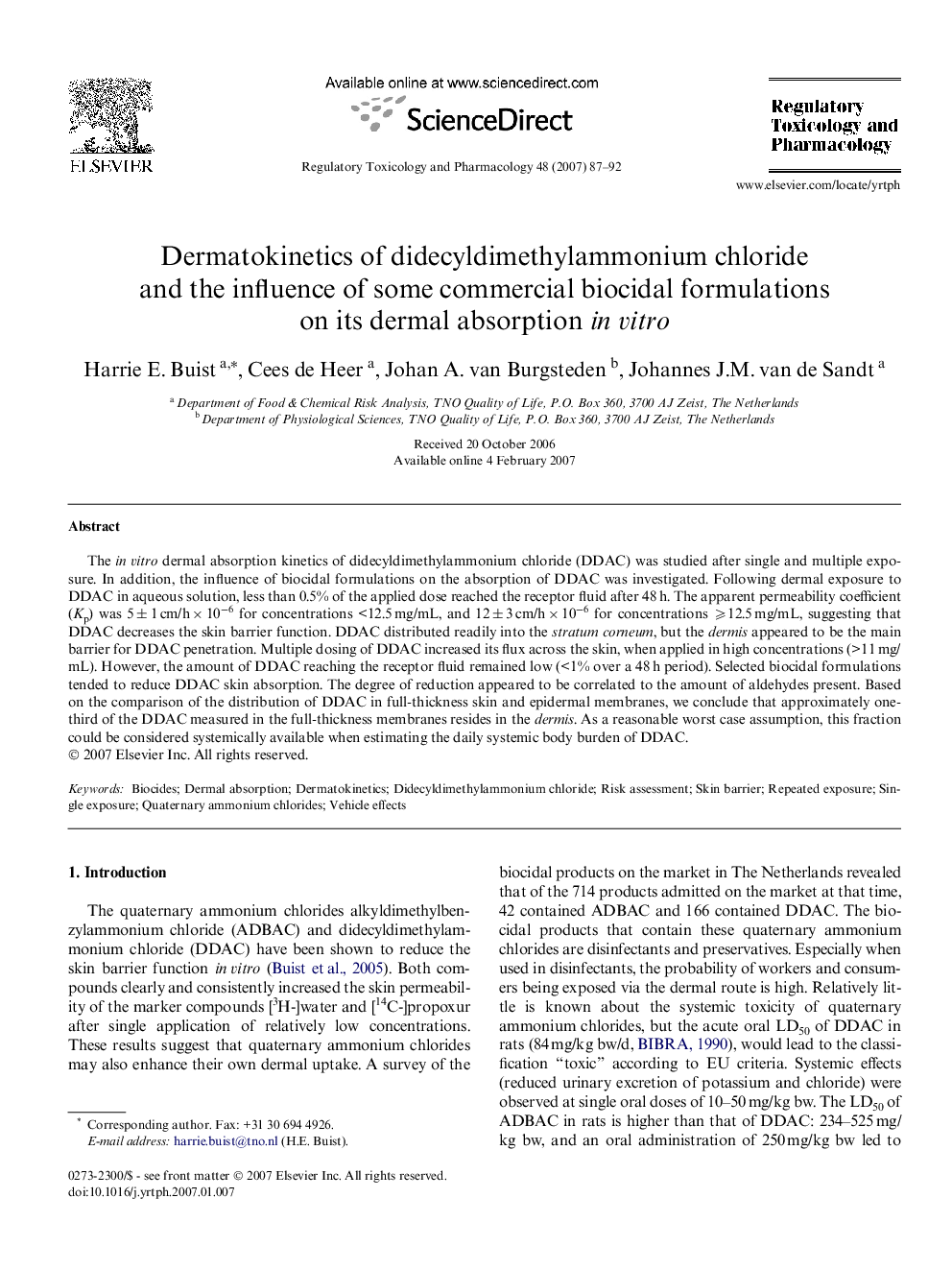| Article ID | Journal | Published Year | Pages | File Type |
|---|---|---|---|---|
| 2593041 | Regulatory Toxicology and Pharmacology | 2007 | 6 Pages |
The in vitro dermal absorption kinetics of didecyldimethylammonium chloride (DDAC) was studied after single and multiple exposure. In addition, the influence of biocidal formulations on the absorption of DDAC was investigated. Following dermal exposure to DDAC in aqueous solution, less than 0.5% of the applied dose reached the receptor fluid after 48 h. The apparent permeability coefficient (Kp) was 5 ± 1 cm/h × 10−6 for concentrations <12.5 mg/mL, and 12 ± 3 cm/h × 10−6 for concentrations ⩾12.5 mg/mL, suggesting that DDAC decreases the skin barrier function. DDAC distributed readily into the stratum corneum, but the dermis appeared to be the main barrier for DDAC penetration. Multiple dosing of DDAC increased its flux across the skin, when applied in high concentrations (>11 mg/mL). However, the amount of DDAC reaching the receptor fluid remained low (<1% over a 48 h period). Selected biocidal formulations tended to reduce DDAC skin absorption. The degree of reduction appeared to be correlated to the amount of aldehydes present. Based on the comparison of the distribution of DDAC in full-thickness skin and epidermal membranes, we conclude that approximately one-third of the DDAC measured in the full-thickness membranes resides in the dermis. As a reasonable worst case assumption, this fraction could be considered systemically available when estimating the daily systemic body burden of DDAC.
